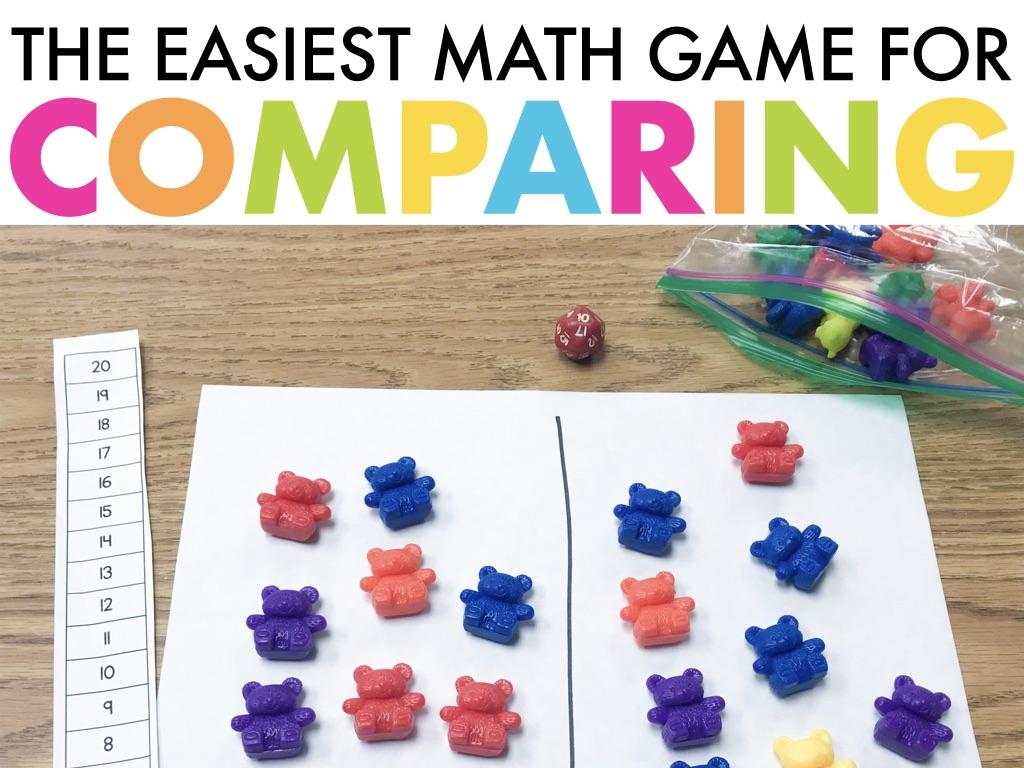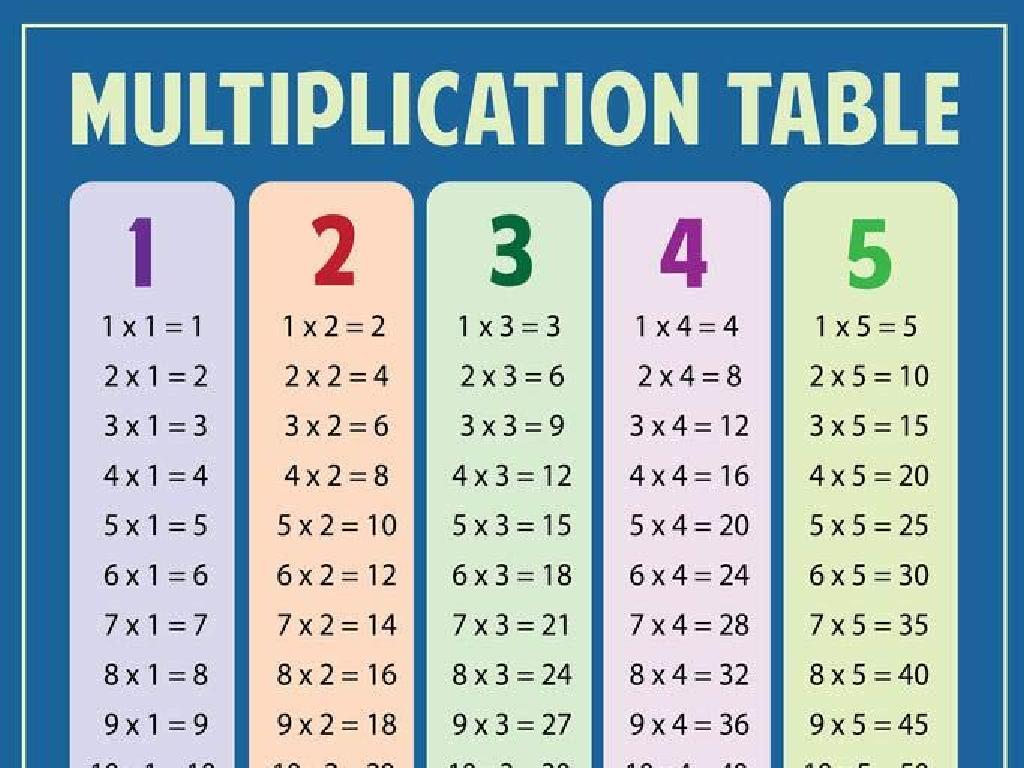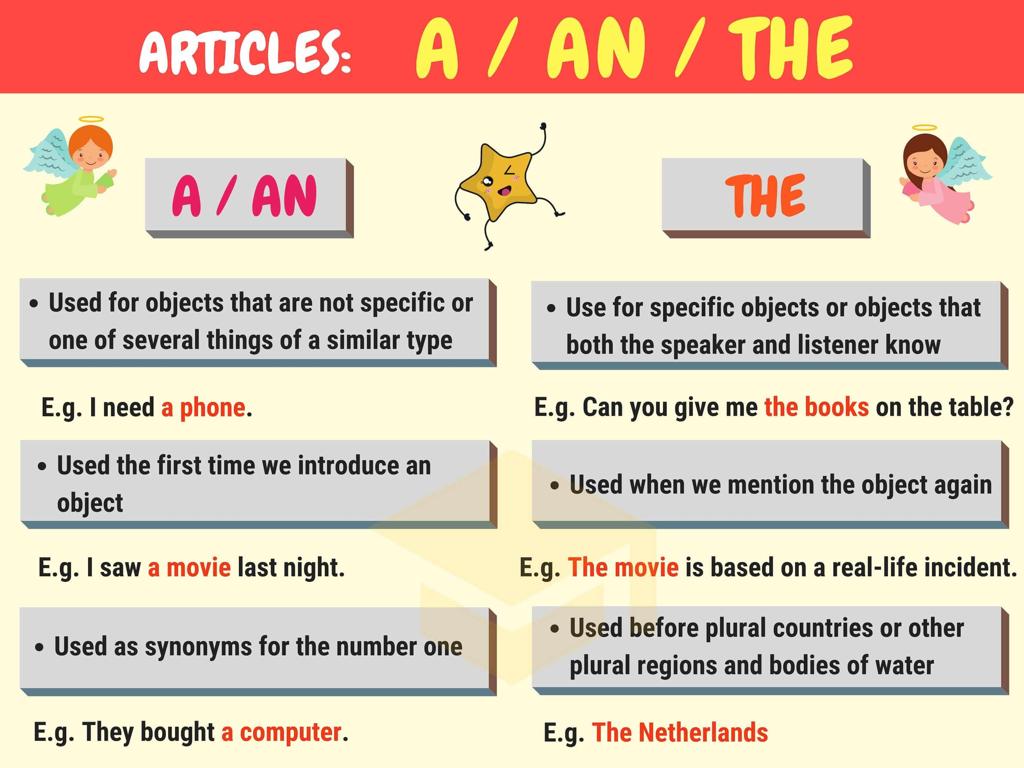Interpret Frequency Charts: Multi-Step Problems
Subject: Math
Grade: Fifth grade
Topic: Data And Graphs
Please LOG IN to download the presentation. Access is available to registered users only.
View More Content
Diving into Data: Frequency Charts
– Explore frequency charts
– Read and interpret data
– Look for patterns and compare information
– Data’s role in daily life
– Data helps us make informed decisions
– Engage with real-world examples
– Use examples like weather patterns or class attendance
|
This slide introduces students to the concept of frequency charts and their importance in understanding data. Begin by explaining what frequency charts are and how they are used to organize data. Emphasize the skills needed to read and interpret the information presented in these charts. Discuss how data plays a crucial role in our daily lives, from predicting the weather to keeping track of homework assignments. Use relatable examples to show how frequency charts can represent various types of data. Encourage students to think of other areas where data is important. The goal is to make students comfortable with data interpretation and to understand its practical applications.
Understanding Frequency Charts
– Frequency charts organize data
– A visual way to sort information
– They show data occurrence
– Look for patterns in how often things happen
– Numbers represent occurrences
– Instead of tally marks, we use numerical values
– Similar to tally charts
|
A frequency chart is a visual tool used in mathematics to organize data and show how often each value occurs within a set. It’s a step up from a tally chart because it uses numbers to represent the frequency of occurrences, making it easier to read and interpret. When teaching this concept, ensure that students understand how to read the chart by identifying the frequency of specific data points. Provide examples of frequency charts using familiar data sets, such as the number of each type of fruit in a fruit bowl, and guide students through the process of interpreting the information presented. Encourage them to think about why frequency charts are useful and how they can help us understand data better.
Understanding Parts of a Frequency Chart
– Chart Title: Guides our understanding
– The title explains the chart’s purpose, like ‘Favorite School Lunches’
– Categories: Lists items being counted
– Categories could be ‘pizza’, ‘burgers’, ‘salads’, etc.
– Frequency: Counts occurrences per category
– If ‘pizza’ is listed 10 times, its frequency is 10
– Interpreting Data: Making sense of numbers
– Use the frequency to answer questions about the data
|
This slide introduces the basic components of a frequency chart, which is a tool used in math to organize data. The title of the chart is essential as it tells us what kind of information the chart is showing. Categories represent the different groups or types of data we are interested in, and the frequency tells us how many times each category appears. Understanding these parts is crucial for interpreting the chart and solving multi-step problems. Students should practice by creating their own frequency charts with data from class surveys or experiments.
Reading a Frequency Chart
– Identify categories and frequencies
– Categories are groups in the chart, frequencies show how often each occurs
– Comprehend number representation
– Numbers indicate how many times a category appears
– Determine most/least frequent
– Look for highest and lowest frequency values to answer
– Practice with real data
– Use a sample chart to apply what you’ve learned
|
This slide introduces students to the basics of interpreting frequency charts, which are tools for organizing data. Start by explaining how to identify different categories on the chart and their corresponding frequencies. Clarify that the numbers represent the count of occurrences for each category. Engage the class with a practice problem by asking them to identify the most and least frequent categories from a given chart. Provide a sample frequency chart and guide them through the process of analyzing it. This will help students become familiar with interpreting data and solving multi-step problems. Encourage them to ask questions and discuss their findings.
Creating Our Frequency Chart
– Collect classroom item data
– Count different items in our classroom
– Choose item categories
– Decide on groups for items, like books, pens, etc.
– Record item frequencies
– Tally how many we have of each type
– Understand chart significance
– Learn how this data helps us analyze our environment
|
This slide is designed to guide students through the process of creating a frequency chart with data from their own classroom. Start by having students count various items in the classroom, such as books, pencils, or chairs. Next, help them categorize these items into groups. Then, students will tally the number of items in each category to fill in the frequencies on their charts. Emphasize the importance of accurate counting and recording. Finally, discuss with the students how this chart can give us valuable insights into our classroom’s resources and needs. This activity not only teaches data collection and representation but also encourages observation and critical thinking skills.
Interpreting Data: Multi-Step Problems
– Understanding combined categories
– Categories can be grouped together for new insights
– Multi-step problem solving
– Some questions need several calculations to find the answer
– Example: Combining category frequencies
– If ‘Red’ has 5 and ‘Blue’ has 8, combined they have 13
– Practice with real data
|
This slide introduces students to the concept of combining categories in frequency charts and solving multi-step problems. Start by explaining that data can be grouped in different ways to gain new insights. Emphasize the importance of understanding each step in a problem before moving to the next. Use the example provided to show how to combine frequencies from two categories. Then, give students practice problems using real data sets to solidify their understanding. Encourage them to explain their thought process as they work through each step.
Real-Life Applications of Frequency Charts
– Frequency charts in daily life
– Example: Weather pattern tracking
– Record daily temperatures to see patterns
– Discuss other uses of frequency charts
– Can we use them in sports, shopping habits?
– Understanding data with charts
– Charts make it easier to see trends and make predictions
|
This slide aims to show students how frequency charts are used in everyday life, such as tracking weather patterns. By recording daily temperatures, students can observe trends and make predictions about future weather. Encourage students to think of other areas where frequency charts could be useful, like in sports to track scores or in monitoring their own shopping or reading habits. Discuss how frequency charts help us organize data in a way that makes it easier to understand and analyze information, which is a valuable skill in many aspects of life. Have students come up with their own examples and share how frequency charts could help them in those scenarios.
Class Activity: Frequency Chart Challenge
– Collect data on favorite lunches
– Create a frequency chart
Tally the number of votes for each meal option
– Present your findings
Explain your chart and what it shows about class preferences
– Discuss the results
What does the data tell us about our favorite meals?
|
This activity is designed to engage students with practical application of frequency charts. Divide the class into small groups and have each group survey their classmates about their favorite school lunch meals. Each group will then create a frequency chart based on the collected data, which will involve tallying up the number of votes for each meal and representing this visually. After creating their charts, groups will present their findings to the class, explaining what their chart shows about the class’s meal preferences. Encourage discussion about the results: which meal is the most popular or least popular, and why some meals might have received more votes than others. This activity will help students understand how to collect, organize, and interpret data, as well as how to communicate their findings effectively.
Conclusion: Frequency Charts Reflection
– Recap of frequency chart learning
We learned how to read and interpret data on frequency charts.
– Importance of frequency charts
Understanding charts helps us organize and compare information effectively.
– Applying knowledge to real life
We can use charts to make decisions based on data, like in surveys or shopping lists.
– Open floor for questions
|
As we wrap up today’s lesson, it’s important to reflect on what we’ve learned about frequency charts. These charts are a visual tool that help us understand how often something occurs. This knowledge is not only useful in math class but also in real-world situations, such as conducting surveys or keeping track of daily activities. Encourage students to think about how they can apply what they’ve learned to situations outside of the classroom. Finally, open the floor for any questions or thoughts the students might have, ensuring they feel comfortable with the material covered today.






